Principal Place of Residence Exemption Loss if Sold While Overseas Summary of how the Principal Place of Residence (PPR) Exemption is impacted by moving overseas. When Australian homeowners move overseas and become non-residents for tax purposes, selling their...
Property Developments – Profit Margins & GST Margins Schemes – how does it work together?
Don the developer
Don has decided to go into the business of buying residential houses with the view to develop small unit complexes. Don seeks advice, registers for GST and on the 1 February 2010 Don buys a home on a 1200m2 block from John & Mary for $600,000. As the sale to Don from John & Mary was not a taxable supply (in the course of the sellers business) as it was the sale of a private home. No GST was charged on the sale, and hence the GST Margin Scheme is available to be utilised by Don.
Don’s Development Costs
Don applies to the local council for Development Approval (DA) to build 4 units which takes 6 months and cost Don $100,000 to get through council. Don enlists the help of a local real estate agent to ensure the design of the unit complex is ideal for the local market in size and layout and at a selling pricing point to meet anticipated market demand in the area. Don settles on designs, selling prices of $695,000 per unit on average
The project is completed around April 2011, and all units sold by June 2011 for $2,780,000.
Don’s development costs after the house & land were stamp duty $20,000, DA $100,000, building costs $280,000 per unit, interest and bank fees of $150,000, selling & marketing costs of $120,000, totaling $1,510,000.
GST Margin Scheme
Sales less Purchase = $2,780,000 (4units@$695Kea) – $600,000 (house & land only)
$2,180,000 (Margin ) then 1/11 thereafter is $198,181 the GST (reported on the June BAS).
Profit Margin
(for this exercise let’s assume all development costs are net of GST, which has already been claimed back during the project on each BAS).
$2,180,000 (GST Margin Scheme) – $198,181 (GST) – $1,510,000 (development costs) results in a profit of $471,819 , as apposed to being classified as a capital gain, as the project was an enterprise rather than a passive investment.
Australian Homeowner Moving Overseas and Selling Their Principal Place of Residence (PPR) – Avoiding a $295,200 CGT Bill
Principal Place of Residence Exemption Loss if Sold While Overseas Summary of how the Principal Place of Residence (PPR) Exemption is impacted by moving overseas. When Australian homeowners move overseas and become non-residents for tax purposes, selling their...
Investment Property Capital Gains Tax (CGT) Calculation with PPR Transition
Having an investment property prior or posted to it being a principal place of residence has tricky CGT Calculations. Capital Gains Tax (CGT) is an essential consideration for property owners when selling a property used for different purposes over time. This blog...
Understanding Land Tax in Australia
Picture of a vacant block of land to illustrate it may be subject to land tax What is Land Tax? Land tax is a state and territory-imposed tax on the unimproved value of taxable land owned by individuals, companies, and trusts. It is calculated annually based on a...
Tiny homes have excellent rental yields, income streaming and tax minimisation strategies. How do they compare to a Granny Flat?
What are the tax and investment considerations for a Granny Flat above versus a Tiny Home below? Income Tax Return Reporting - Income Streaming Tiny Homes Tiny home ownership does not have to follow the ownership interest of the underlying property ownership. For...
Easier for Victoricans to build Granny Flats from December 2023.
Secondary Dwelling From December 2023 the Victorian Government has passed planning changes to make it easier to build Granny Flats - or "small secondary dwellings", on existing homes. The Victorian Premier Jacinta Allan revealed that planning permits will no longer be...
Property Investors to ensure income and expenses are correct.
The ATO is particularly targeting property investors that are not using the help of a specialist property tax accountant like Umbrella Property Accountant, due to the high error rate being discovered from ATO Audits. The ATO Audits into self-preparers have uncovered...
Residential Rental Caps & Vacancy Taxes will help supply for tenants?
Gold Coast - Example of the Housing Rental Competing Forces Many Apartments are sitting empty most of the year, including an entire beachfront tower. Gold Coast mayor Tom Tate cited an entire high-rise sitting empty in the triple tower Jewel development at Surfers...
Victorian Labour Government Land Tax Hikes to push up Rents
Victoria was the most locked-down state in Australia, if not the world during Covid, resulting in the Victorian Government accruing over $30 Billion in debt to keep the doors closed. Victorian Statement Government wants to raise $8.6 Billion over the next 4 years by...
Joint Venture(JV) Tax Considerations for Property Developers
Joint Venture tax understanding for property developers in Australia Joint Venture Agreement What is a (JV) for Property Development A joint venture (JV) is a cooperative agreement between two or more parties in which all parties contribute their resources (such as...
Labor Targets Housing with ‘Shared Equity Scheme
A federal Labor government would deliver a $329-million help-to-buy scheme, providing 10,000 Australians with a government guarantee of up to 40 per cent on new homes or 30 per cent on existing homes with a two per cent deposit.




